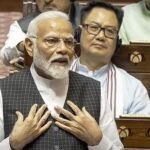The Enchanting Melodies of MS Subbulakshmi: A Carnatic Maestro’s Journey
Unveiling the Musical Tapestry of Madurai Shanmukhavadivu Subbulakshmi
In the realm of Indian classical music, Madurai Shanmukhavadivu Subbulakshmi, lovingly known as MS, emerges as a luminous star, leaving an indelible mark on the rich heritage of Carnatic music. Born on 16 September 1916 in Madurai, Tamil Nadu, her life was a symphony that resonated far beyond geographical borders.
Early Harmonies: A Musical Prodigy in the Making
From the cobblestone streets of Madurai to the global stage, MS Subbulakshmi’s journey began with the gentle hum of ragas that echoed through her childhood. Recognizing her prodigious talent, the musical cosmos beckoned, setting the stage for a legendary career.
Bharat Ratna: A Trailblazer’s Triumph
In a historic moment, MS Subbulakshmi became the first musician ever to be adorned with the Bharat Ratna, India’s highest civilian honor. This accolade, bestowed upon her for her unparalleled contribution to the world of music, elevated her to the pantheon of cultural icons, making her a beacon for aspiring musicians.
Ramon Magsaysay Award: A Global Acclaim for Artistry
Not confining her artistry to national boundaries, MS Subbulakshmi transcended borders, becoming the first Indian musician to receive the prestigious Ramon Magsaysay Award. Her music, a universal language that spoke to hearts around the world, earned her this distinguished recognition, further solidifying her legacy.
The Echo of Devotion: Musical Narratives and Spiritual Journeys
MS Subbulakshmi’s renditions weren’t just melodic; they were spiritual odysseys that touched the soul. Her ability to infuse bhakti into every note created a unique musical tapestry that resonated with audiences, forging an unbreakable connection between the divine and the earthly.
Legacy Beyond Time: The Enduring Influence of MS Subbulakshmi
Even after her passing on 11 December 2004, the echo of MS Subbulakshmi’s voice continues to reverberate through the corridors of classical music. Her legacy lives on not only in the awards and honors but in the hearts of those who have been captivated by the magic of her music.
In celebrating MS Subbulakshmi, we honor not just a musician but a cultural luminary whose melodies continue to weave the fabric of our shared heritage. Her journey, adorned with accolades and resonant with soulful melodies, remains an inspiration for generations to come.
Journey of Melodies: MS Subbulakshmi’s Early Years
Introduction: A Musical Prodigy’s Genesis
Born as Kunjamma in Madurai on 16 September 1916, MS Subbulakshmi emerged from a lineage deeply rooted in music. Her parents, veena player Shanmukavadiver Ammal and Subramania Iyer, set the stage for a musical odyssey that would resonate across generations.
Musical Roots: Nurtured in the Cradle of Carnatic Tradition
Growing up amidst the harmonies of Madurai, Kunjamma, later known as MS Subbulakshmi, began her journey into Carnatic music at an early age. The influence of her grandmother, Akkammal, a skilled violinist, added another layer to her musical upbringing.
Guiding Lights: The Maestros Who Shaped Her Craft
Under the tutelage of Carnatic maestro Semmangudi Srinivasa Iyer and later, Hindustani virtuoso Pandit Narayanrao Vyas, Subbulakshmi honed her skills. Her immersion in the world of music was further enriched by interactions with luminaries like Karaikudi Sambasiva Iyer, Mazhavarayanendal Subbarama Bhagavathar, and Ariyakudi Ramanuja Iyengar.
Early Notes: A Debut Performance to Remember
In 1927, at the age of eleven, Subbulakshmi graced the 100-pillar hall inside the Rockfort Temple, Tiruchirappalli, for her maiden public performance. Accompanied by Mysore Chowdiah on the violin and Dakshinamurthy Pillai on the mridangam, this concert marked the inception of a prodigious musical journey, orchestrated by Tiruchirappalli-based Indian National Congress leader F. G. Natesa Iyer.
Relocation to Madras: A New Chapter Unfolds
The year 1936 witnessed Subbulakshmi’s relocation to Madras (now Chennai), a pivotal move that would shape her future in the world of music. Concurrently, she made her foray into cinema with the film “Sevasadan” in 1938, sharing the screen with F. G. Natesa Iyer once again.
Cinematic Prelude: A Duet of Music and Movies
Her cinematic debut marked the confluence of music and cinema, providing audiences with a visual and auditory treat. Collaborating with F. G. Natesa Iyer, Subbulakshmi’s venture into films added a new dimension to her multifaceted artistic journey.
In tracing the early years of MS Subbulakshmi, we unveil the intricate tapestry of her musical evolution—a narrative etched in the cadence of Carnatic notes and the magic of the silver screen. As we delve into her formative years, we witness the genesis of a musical legend destined to enchant hearts worldwide.
M.S. Subbulakshmi: A Melodic Odyssey Through Time
Introduction: Harmonies Woven in Heritage
In the rich tapestry of Carnatic classical music, M.S. Subbulakshmi stands as a beacon, her life a symphony echoing across generations. Born into the embrace of music, she embarked on a journey that would elevate her to the pinnacle of artistic greatness.
Early Training: Nurtured by Tradition and Talent
Under the guidance of her mother, Shanmukhavadivu, M.S. Subbulakshmi’s musical journey commenced. The confluence of maternal wisdom and inherent talent laid the foundation for a prodigious career. Later, she delved into the intricacies of Hindustani classical music under the tutelage of Pandit Narayan Rao Vyas.
A Precocious Prelude: The First Recording at Age 10
At the tender age of 10, M.S. Subbulakshmi’s voice graced her first recording, a testament to her early prowess. The melodies that emanated from this young prodigy hinted at the extraordinary musical journey that lay ahead.
Madras Music Academy: A Spellbinding Debut
In 1929, at the age of 13, Subbulakshmi took the stage at the prestigious Madras Music Academy. Breaking tradition, the academy invited this young virtuoso to perform bhajans, marking the inception of a luminous career. Her spellbinding performance earned her accolades, admiration, and the title of a musical genius from discerning critics.
Rising Crescendo: Concerts and International Acclaim
By the age of seventeen, M.S. Subbulakshmi was captivating audiences on her own, gracing the renowned Madras Music Academy with major performances. Her music transcended borders as she became India’s cultural ambassador, enchanting audiences in London, New York, Canada, and the Far East. Landmark performances at Carnegie Hall, the UN General Assembly, Royal Albert Hall, and the Festival of India in Moscow underscored her global impact.
A Musical Pilgrimage: Rameswaram and Beyond
In 1969, accompanied by Indian Railways Advisor SN Venkata Rao, Subbulakshmi embarked on a soul-stirring journey to Rameswaram. Her melodic offerings in the Ramanathaswamy Temple became a testament to her deep spiritual connection and cultural reverence.
The Final Cadence: Retirement and Legacy
Following the passing of her husband, Kalki Sadasivam, in 1997, M.S. Subbulakshmi bid farewell to public performances. Her last concert in 1997 marked the end of an era, but her musical legacy continued to resonate.
Curtains Fall: Remembering an Icon
On 11 December 2004, the melodies of M.S. Subbulakshmi fell silent at her home in Kotturpuram, Chennai. The world lost a musical luminary, but her legacy endures—a timeless symphony that transcends boundaries and continues to inspire generations.
In celebrating the life of M.S. Subbulakshmi, we honor not just a musician but a cultural ambassador whose melodies echo in the hearts of music enthusiasts worldwide.
M.S. Subbulakshmi: A Symphony of Honors and Humanitarianism
Introduction: Reverence in Words
The accolades bestowed upon M.S. Subbulakshmi extend far beyond the realm of music. Revered by leaders, musicians, and the masses alike, her legacy is a harmonious blend of artistic brilliance and humanitarian spirit.
Nehru’s Homage: A Queen of Music
Pandit Jawaharlal Nehru, the stalwart Prime Minister, humbly acknowledged M.S. Subbulakshmi as the “Queen of Music,” expressing a sentiment that echoed the nation’s admiration for her transcendent talent.
Musical Titles: Tapaswini, Suswaralakshmi, and Aathuvaan Sur
Lata Mangeshkar aptly dubbed her “Tapaswini,” emphasizing the renunciate devotion in her music. Ustad Bade Ghulam Ali Khan bestowed upon her the title of “Suswaralakshmi,” the goddess of the perfect note. Kishori Amonkar went further, labeling her the “ultimate eighth note” or “Aathuvaan Sur,” a melody above the fundamental seven notes in music.
Sarojini Naidu’s Praise: Nightingale of India
The great national leader and poet, Sarojini Naidu, adorned M.S. Subbulakshmi with the title “Nightingale of India,” recognizing the enchanting quality of her voice that resonated through the nation.
Awards and Recognitions: A Trail of Achievements
M.S. Subbulakshmi’s journey was punctuated with prestigious honors:
- Padma Bhushan (1954): The nation recognized her brilliance early in her career.
- Sangeet Natak Akademi Award (1956): Acknowledgment from the apex body of performing arts in India.
- Sangeetha Kalanidhi (1968): A coveted title recognizing mastery in Carnatic music.
- Ramon Magsaysay Award (1974): Often deemed Asia’s Nobel Prize, an international accolade.
- Padma Vibhushan (1975): A second Padma award, underscoring her unparalleled contribution.
- Sangeetha Kalasikhamani (1975): Honored by The Indian Fine Arts Society, Chennai.
- Kalidas Samman (1988): Recognition for excellence in the field of arts.
- Indira Gandhi Award for National Integration (1990): Commendation for fostering national unity.
- Bharat Ratna (1998): India’s highest civilian honor, a testament to her cultural impact.
Public Recognition: Statues and Sarees
- Asthana Vidhwan of Tirumala Tirupati Devasthanams: Acknowledged as a resident artist, a unique honor.
- Bronze Statue in Tirupati: A lasting tribute unveiled by the Chief Minister Y. S. Rajasekhara Reddy in 2006.
- MS Blue Saree: A shade named in her honor, reflecting her influence on fashion and culture.
Philanthropy and Charitable Contributions
M.S. Subbulakshmi’s generosity knew no bounds:
- Charity Concerts: Over 200 concerts raising well over Rs. 10,000,000 for various causes.
- Recording of “Venkatesa Suprabhatam”: Proceeds donated to the Veda Patasala run by Tirupati Tirumala Devasthanam.
- Royalties to Charity: Donated royalties from best-selling records to numerous charitable organizations.
Global Recognition: Stamps and UN Commemoration
- Commemorative Postage Stamp (2005): India paid tribute to her with a special stamp.
- UN Stamp for Birth Centenary: The United Nations decided to honor her with a stamp marking her centenary.
In the symphony of her life, M.S. Subbulakshmi not only achieved musical greatness but also touched hearts with her humanitarian endeavors, leaving an indelible legacy that resonates in every note and echoes in acts of kindness.









